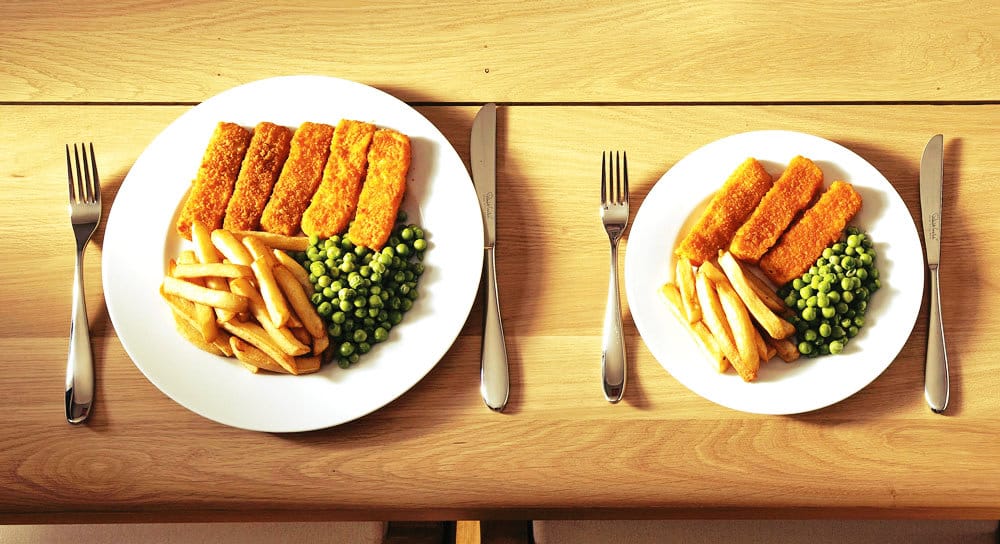Correct Food Portion Sizes: How to Keep Portion Distortion in Check

Nutrition scientists have devised a new way of measuring out food portions – using your hands, thumbs and fists rather than a set of scales.
The new guide from the British Nutrition Foundation has been created after studying portion sizes around the world and what is available in UK supermarkets.
Getting portion size right for you
We’re all individuals with different needs but for healthy adults, the range of different foods we need is pretty much the same for all of us. However, the amount of food we need varies from person to person.
The portion sizes we give are averages for healthy adults, based on a daily calorie allowance of 2000kcal – the amount estimated for average, healthy weight, adult woman. If you’re tall or very active you may need more and could have larger portions. If you’re a small person or are trying to lose weight, you may need smaller portions. If you use the hand measures we give then portion sizes will vary with the size of your hands and so, generally, bigger people will automatically get bigger portions and smaller people will get smaller ones.
There are lots of different ways to eat a healthy diet and you can use this guide to fit in with your preferences and beliefs – from the Mediterranean, vegetarian or vegan to a more traditional British diet. It’s about balancing the food groups and finding the portion sizes that are right for you.
Finding your balance across the day
From each food group we are suggesting:
- Fruit and vegetables:5+ portions per day
- Starchy carbohydrates:3-4 portions per day
- Beans, pulses, fish, eggs, meat and other proteins:2-3 portions per day
- Dairy and alternatives:2-3 portions per day
Portion sizes
If you really want to measure portion size accurately the best way is to weigh your food but we have provided some practical measures using your hands and spoons that you can use to get an idea of sensible portion sizes.
For example:
- 2 handfuls of dried pasta shapes or rice (75g)
- A bunch of spaghetti the size of a £1 coin, measured using your finger and thumb (75g)
- the amount of cooked pasta or rice that would fit in two hands cupped together (180g)
- A baked potato about the size of your fist (220g)
- About 3 handfuls of breakfast cereal (40g)
- A piece of grilled chicken breast about half the size of your hand (120g)
- A piece of cheddar cheese about the size of two thumbs together (30g)
- About 1 tablespoon of peanut butter (20g)
- About 3 teaspoons of soft cheese (30g)
